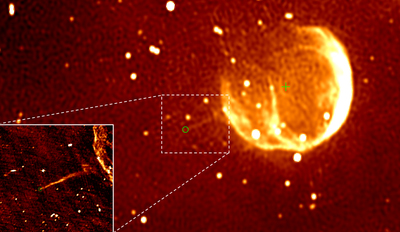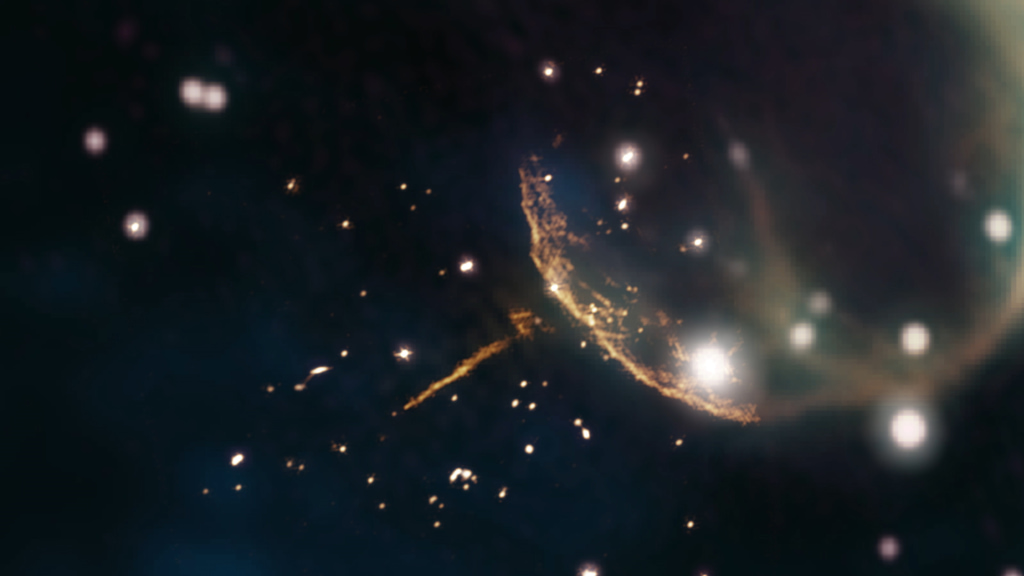A unusual star is traveling through our galaxy at an unfathomable pace. PSR J0002+6216, a lone runner traveling at 700 miles per second, or 2.5 million miles per hour, was discovered by astronomers (1,127 kilometers per second).
The star was seen flying away from the expanding cloud left by a recent supernova explosion. After breaking through the outer layer of the explosion, it leaves a huge cosmic trail as it moves through the galaxy.

PSR J0002+6216 moves at a speed of 1,127 kilometers per second. This means that if it were going from Earth to the moon, it would get there in less than 6 minutes.
Astronomers say that the tail is about 13 light-years long and points back toward the center of the supernova.
A pulsar, which is what PSR J0002+6216 is, is a type of neutron star. A pulsar is a neutron star that spins and sends out a beam of electromagnetic radiation. These stars spin at mind-bogglingly high speeds, which makes them shoot out jets of electromagnetic radiation. This pulsar turns 8.7 times per second. If the star’s jets of electromagnetic radiation line up with Earth as it spins on its axis through space, they look like a cosmic lighthouse.
Frank Schinzel, a scientist at the National Radio Astronomy Observatory (NRAO), says, “Thanks to its thin, dart-like tail and a lucky way to look at it, we can follow this pulsar all the way back to where it was born. More research into this object will help us figure out how these explosions can make neutron stars move so fast.

PSR J0002+6216 is about 6,500 light-years from Earth. It is in the constellation Cassiopeia.
Researchers say that the pulsar is about one light-year away from the core of CTB 1, which is a supernova remnant. It was found that PSR J0002+6216 was moving through the galaxy five times faster than most pulsars do.
Astronomers say that PSR J0002+6216 moves faster than 99 percent of the Pulsars whose speeds have been measured. Here is where you can read the research paper.
Source: amazingastronomy.thespaceacademy.org








